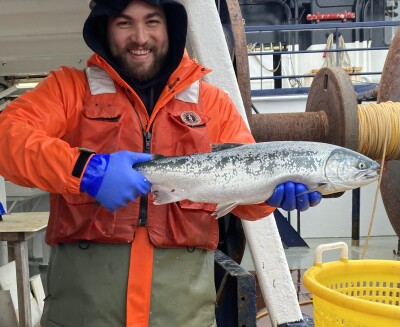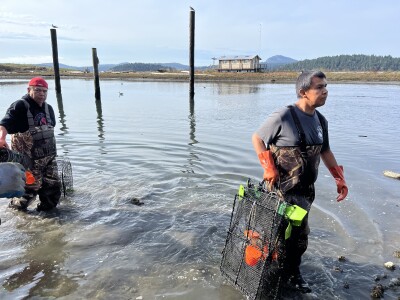Come together
One of the first things I learned about the fishing industry is that fishermen tend not to trust federal managers. It makes sense: they're independent small-business owners being managed from the top down as if they all run their businesses the same way. I also soon learned that there is a wealth of scientists who want to help improve fisheries data and management. These people are arguably as passionate about their work and fisheries as fishermen themselves.
When you get these two groups together, they get along — really well. Every time I talk to a scientist or a fisherman who has been involved in cooperative research, I hear the same thing: It's amazing how much those folks know. The mutual respect and admiration for institutional knowledge and experience on both sides gives me hope for the future of fisheries data and management.
My education on collaborative research began at the first fishing trade show I attended — Fish Expo WorkBoat Atlantic in Providence, R.I. I remember Jimmy Ruhle, his brother the late Phil Ruhle (who helped develop the Eliminator Trawl) and David Goethel telling me in separate conversations that there was no way commercial fishermen would see a future in New England without taking a role in cooperative research and management. These days, the notion of collaboration seems like a force of nature in the fishing industry — and that's saying something about a line of work that relies on the balance and bounty of nature.
On page 24, Senior Editor Linc Bedrosian writes about his day at sea on the Darana R with skipper Jimmy Ruhle and a team from the Virginia Institute of Marine Science. They shoved off from Point Judith, R.I., to conduct sampling for the Northeast Area Monitoring and Assessment Program's spring trawl survey.
But what happens to this research when the boat docks? One option is to share it with a clearing house of data like MARACOOS, the Mid-Atlantic Regional Association Coastal Ocean Observing System. This massive and wide-ranging team is committed to turning ocean information into usable products for fishermen as well as government agencies. My profile of the program is on page 28.
* * *
My favorite time of year is approaching. We're once again asking you to submit Crew Shots for our annual tribute to U.S. commercial fishing fleets. Please send photos taken this year to [email protected], and be sure to include Crew Shots 13 in the subject line. We will also need to know names of those pictured (from left to right), the boat, home port, location (if not the home port), fishery and gear type. The more information you include and the larger your image, the better your chances are for getting into the magazine or on the cover!
I would like to continue to honor the work of our good friends at the NIOSH Commercial Fishing Safety Research Program and the Alaska Marine Safety Education Association by requesting photos of you and your crew in safety gear.
The deadline for Crew Shots submissions is Oct. 31, 2013.
— Jessica Hathaway






